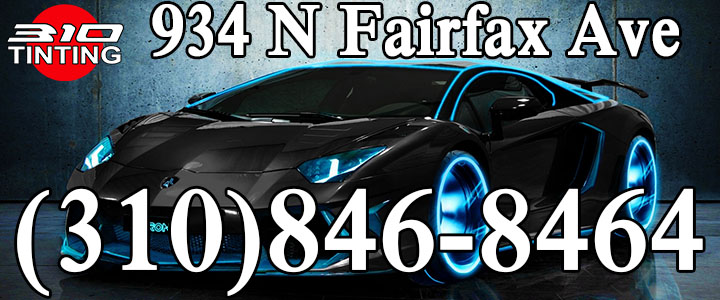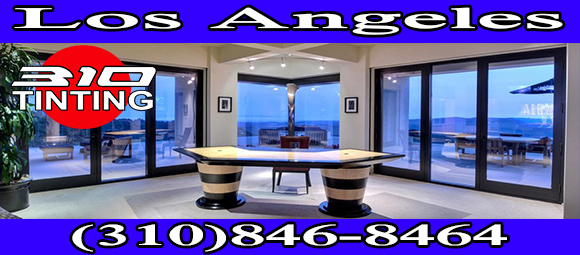Window tinting Los Angeles

Anderson Cooper announcement 2008 skin cancer condition lead to surgery
Window tints can be used in applications like shopfronts windows, office block windows, and house windows. This is often done to increase privacy, and decrease heating and cooling costs. Window tints are used in some energy efficient buildings.
Window films are also used to apply See-through graphics to glass and other transparent surfaces, to provide advertising, branding, signage and decoration. See-through graphics are most commonly applied using a perforated window film with a graphic visible from one side but not the other side, which remains see-though. Vehicle wraps on buses are perhaps the widest application of See-through graphics.
window tinting in Hollywood
There is a way to block UV harmful ultraviolet sun radiation window tinting protects your skin while through the glass
Skin cancer

Skin cancers are cancers that arise from the skin. They are due to the development of abnormal cells that have the ability to invade or spread to other parts of the body. There are three main types: basal-cell skin cancer (BCC), squamous-cell skin cancer (SCC) and melanoma. The first two together along with a number of less common skin cancers are known as no melanoma skin cancer (NMSC).
Basal-cell cancer grows slowly and can damage the tissue around it but is unlikely to spread to distant areas or result in death. It often appears as a painless raised area of skin, which may be shiny with small blood vessel running over it or may present as a raised area with an ulcer.
Squamous-cell cancer is more likely to spread. It usually presents as a hard lump with a scaly top but may also form an ulcer.
Melanomas are the most aggressive. Signs include a mole that has changed in size, shape, color, has irregular edges, has more than one color, is itchy or bleeds.
Sun protection for your health and your home

While it’s understood that taking sun safety precautions is important outside, few people realize they can sustain sun damage indoors, too. While both ultraviolet A (UVA) and ultraviolet B (UVB) radiation from the sun can harm the skin and lead to skin cancers, UVB is effectively blocked by glass. However, at least 50 percent of UVA rays can pass through windows. Window film is an increasingly effective solution, offering substantial indoor protection by blocking up to 99.9 percent of UVA radiation. Although they are less intense than UVB, UVA rays are 30 to 50 times more prevalent and are present with relatively equal intensity during all daylight hours throughout the year. Window film can help prevent harmful UVA rays from damaging both your skin and your belongings.
Available in varied tints, residential and commercial window films can also cut down glare by more than half while allowing 30-80 percent of visible light to get through, depending on the customer’s needs. The benefits of installing window film go beyond protecting one’s skin and household items, as it also can reduce energy costs. In hot weather, window film cuts down heat within the home and in cold weather it reflects interior heat back into the home. Additionally, some new types of “safety” film help hold residential and commercial glass in place if shattered. Several times thicker than the standard sun-protective film, it can greatly reduce the chances of break-ins, property damage, and even personal injury that can result from broken glass.

What is Ultraviolet Radiation?

UV radiation is part of the electromagnetic (light) spectrum that reaches the earth from the sun. It has wavelengths shorter than visible light, making it invisible to the naked eye. These wavelengths are classified as UVA, UVB, or UVC, with UVA the longest of the three at 320-400 nanometers (nm, or billionths of a meter). UVA is further divided into two wave ranges, UVA I, which measures 340-400 nanometers (nm, or billionths of a meter), and UVA II which extends from 320-340 nanometers. UVB ranges from 290 to 320 nm. With even shorter rays, most UVC is absorbed by the ozone layer and does not reach the earth.
Both UVA and UVB, however, penetrate the atmosphere and play an important role in conditions such as premature skin aging, eye damage (including cataracts), and skin cancers. They also suppress the immune system, reducing your ability to fight off these and other maladies.
UV radiation and skin cancer

By damaging the skin’s cellular DNA, excessive UV radiation produces genetic mutations that can lead to skin cancer. Both the U.S. Department of Health and Human Services and the World Health Organization have identified UV as a proven human carcinogen. UV radiation is considered the main cause of no melanoma skin cancers (NMSC), including basal cell carcinoma (BCC) and squamous cell carcinoma (SCC). These cancers strike more than a million and more than 250,000 Americans, respectively, each year. Many experts believe that, especially for fair-skinned people, UV radiation also frequently plays a key role in melanoma, the deadliest form of skin cancer, which kills more than 8,000 Americans each year.
There Is Nothing Healthy about Tan

Anderson Cooper

Anderson Hays Cooper (born June 3, 1967) is an American journalist, author, and television personality. He is the primary anchor of the CNN news show Anderson Cooper 360°. The program is normally broadcast live from a New York City studio; however, Cooper often broadcasts live on location for breaking news stories. In addition he is a major correspondent for 60 Minutes.
From September 2011 to May 2013, he also served as host of his own eponymous syndicated daytime talk show, Anderson Live.
Cooper was educated at the Dalton School, a private co-educational university preparatory day school in New York City. At age 17, after graduating from Dalton a semester early, Cooper traveled around Africa for several months on a “survival trip”. He contracted malaria on the trip and was hospitalized in Kenya. Describing the experience, Cooper wrote “Africa was a place to forget and be forgotten in.” Cooper went on to attend Yale University, where he resided in Trumbull College, and was inducted into the Manuscript Society, majoring in political science and graduated with a B.A. in 1989.
Anderson Cooper Has 'Spot' of Skin Cancer Removed
While following then-Senator Barack Obama on the campaign trail in 2008, journalist Anderson Cooper announced on his CNN.com blog that he had undergone surgery to have a ”small spot of skin cancer” under his left eye removed. Skin cancer on the face is often the result of sun exposure.
After recounting his experience on the campaign trail with Sen. Barack Obama, Cooper, 40, writes, “On a personal note, I’ve been off for the last couple of days. I had minor surgery on Monday. A small spot of skin cancer was removed from under my left eye.”
The setback will not keep Cooper off-camera, he says. “I hadn’t planned on mentioning this, but I still have stitches and you’ll no doubt notice them tonight,” he says on his Wednesday posting. Then, with a nod to PBS talk-show host Charlie Rose’s current black eye – which Rose, 66, got when he tripped on the sidewalk while trying to catch his laptop – Anderson says, “Don’t want you to think I got into a fist fight with Charlie Rose.”
Cooper got another reminder of the power of the sun in 2012, when he was temporarily blinded after failing to wear sunglasses on a boat trip in Portugal. He had sun burned his cornea, the outer layer of the eyeball, resulting in a condition called keratitis.
Finally, protect yourself from UV radiation, both indoors and out. Always seek the shade outdoors, especially between 10 AM and 4 PM. And since UVA penetrates glass, consider adding flat, tinted UV-protective film to your car’s side and rear windows as well as to house and business windows. This film blocks up to 99.9 percent of UV radiation and lets in up to 80 percent of visible light.

310 TINTING - Applications we provide:

310 TINTING – Applications we provide:
Car window tinting in Los Angeles | tint removal Los Angeles | window tinting Law in Los Angeles | CHP police fix it ticket | carbon charcoal ceramic | window tint | front windshield window tinting | Clear Bra | Car Wrapping | Black Matte | Residential Window Tinting Los Angeles Commercial Window Tinting | tint removal | house | Home| store | Mall | Shopping Center | ceramic window tinting | Metallic window film | Dye window tinting films | Hospital window treatment | government security film |office window tinting | Heat Rejection | UV rays | sun and radiation | Window Tinting | yacht liner | Marine Window Tinting | boat | yacht
Related Topics:
Automotive window tinting in Los Angeles DIY projects | window tinting Laws in Los Angeles | window tinting applications in West Los Angeles | Residential window tinting treatments | south |East | West Los Angeles window tinting regulations | Skin Cancer and window tinting advantages
Window Tinting
Marine window tinting in Los Angeles
Power Boat Window Tinting in Los Angeles
Automotive window tinting Los Angeles
Car Window Tinting in Los Angeles
Auto window tinting in East Los Angeles
SUV window tinting in West Los Angeles
truck Window Tinting in Los Angeles
Residential Window Tinting Los Angeles
Home Window Tinting in West Los Angeles
House Window Tinting in East Los Angeles
Sliding Door Window Tinting in Los Angeles
Architectural window tinting Los Angeles
Commercial Window tinting in Los Angeles
Office Window Tinting in West Los Angeles
Security Window Tinting Los Angeles
Anti-Graffiti window tinting in Los Angeles
Car Wrapping in West Los Angeles
Los Angeles window tinting with Nanotechnology
Window Tinting Topics
- Window Tinting Laws in California
- How much Cost Window Tinting
- Window Tinting Shades and Colors
- Heat Rejection Window Tinting
- Ceramic Window Tinting
- Fix it Ticket Window Tinting
- UV Window Tinting Solar Shield
- Nanotechnology Window Tinting
- Discounted Window Tinting Prices
- Yelp Window Tinting
- Window Tinting Installer in LA
- Tint Removal in Los Angeles
By Armando Vera from 310 TINTING
Automotive, Marine, Mobile, Residential, Commercial
Los Angeles California
west Los Angeles – East Los Angeles -South Los Angeles – Central Los Angeles
Call us Now,! @ (310)846-8464

